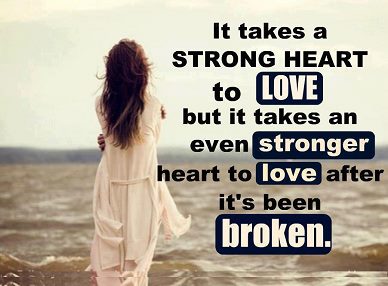A wise mind knows that when we truly love, we will also truly experience pain. Pain is often a by-product of love…even the most perfect or true love. The deeper we love…the deeper our pain is likely to be. That’s why some who have been been deeply hurt by love, have made a conscious decision to never love again. They “refuse” to love again. They guard against lowering their guard…they work very hard to maintain a closed heart, to be detached, and to not care too much. They are not willing to open their lives to love again.
So, in their efforts to protect themselves against future pain, they cause themselves ongoing pain and suffering. Their daily lives are marked with pain…loneliness, anger, resentment, bitterness, unresolved emotional issues and concerns…and the pain of unfulfilled needs for attachment and love.
It takes great strength to open our hearts to love again…because we know that loving someone will also bring pain. It’s the acceptance that nothing is perfect…and the knowing that our lives and the lives of those we love will be much better because we loved again.
Note: The accompanying photo/poster was copied from a Facebook posting. It is not an original work!

